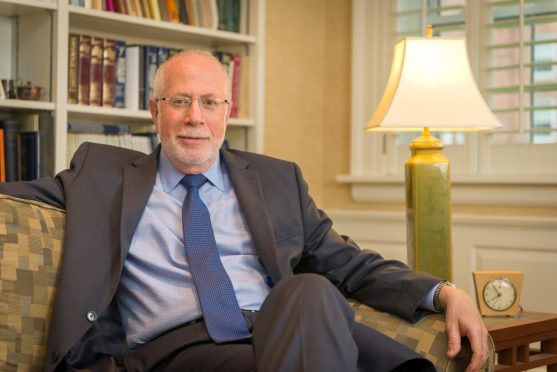<< Back
10 Years After Sandy Hook, How Can We Stop the Next Shooting?

December 10, 2022
Ten years after Sandy Hook – and just months after Uvalde – people continue to ask what motivates these school shooters and what can be done to stop the next massacre.
Institute of Living Psychiatrist-In-Chief Emeritus Hank Schwartz, MD, has been trying to get inside the minds of these killers for the better part of a decade, meticulously combing through public records and whatever facts he can get his hands on.
> Connect with the Institute of Living
Sandy Hook anniversary

With the anniversary of Sandy Hook on Dec. 14, Schwartz has compiled his findings in a presentation, “The Mind of the Mass School Shooter: ‘By the Power of My AR You Will Know Who I Am.’”
Schwartz, who served on the Governor’s Sandy Hook Advisory Commission and was part of the Child Advocate’s investigation and is generally considered one of the foremost experts on the psychology behind mass shootings, is giving his presentation across the country, from Grands Rounds at the University of Texas, Austin, Medical School to the Hartford Hospital Annual Corporators Meeting.
Inside the minds of shooters
Inevitably, everyone wants to know why. And Schwartz, who has spent hundreds of hours reading, writing and speaking about Sandy Hook and other school shootings, is as good a person to ask as any.
He doesn’t profess to have all the answers, but he has learned a lot since Adam Lanza’s deadly attack at the Sandy Hook school in Newtown, killing 26 elementary school children and teachers.
“I’ve spent years trying to understand what happened at Sandy Hook and in particular, looking into the mind of that shooter and others, trying to understand the common denominators between them,” Schwartz says. “Sandy Hook was hardly the first mass school shooting but It was the first of the horrific school shootings to grab and hold our national attention, at least since Columbine… now it (Uvalde) has happened again, 10 years later.”
> Want more health news? Text StartHere to 85209 to sign up for text alerts
Access to guns
Schwartz firmly believes that access to guns is the major reason why America is riddled by mass shootings – he cites statistics that show the softer the gun regulation, the higher the number of gun murders and gun suicides.
“We know that we wouldn’t even be having this discussion were it not for the unrivaled access to weapons of war in America,” Schwartz says.
But there has been little progress on this issue, so he also focuses on other factors, including shooter profiles.
Profile of a mass shooter
Here are some common characteristics of shooters to look for, beyond the obvious that shooters tend to be young, isolated white males who spend inordinate amounts of time online or playing video games:
- Lack of social connectedness
- Low tolerance
- Poor coping skills
- Lack of resiliency
- Failed love relations
- Signs of depression
- Narcissism
- Alienation
- Lack of empathy
- Impulsivity
- Paranoia
- Mental illness
“But for every individual who fits these profiles and might actually shoot, there are likely thousands who would not,” Schwartz notes.
So, outside of continuing to pursue gun legislation and improving mental health diagnosis illness, what can we do?
What can be done?
- Focus on social and emotional learning programs in schools – this can help with empathy and social connectedness.
- Enhance mental health access at all levels of society and connect these programs and services to schools.
- Take social media posts and other signals seriously.
- If you see something, say something. Too often people are aware of bizarre behavior but don’t report it.
- More neuroscience research into areas of the brain that are critical for prosocial behavior, and develop treatments that stimulate these areas of the brain, such as transcranial magnetic stimulation, which is used at the IOL to treat depression.
The clock is ticking.
“It’s all made worse by the contagion effect,” Schwartz says. “Each massacre further disinhibits the potential shooters and increases the likelihood of the next shooting.”